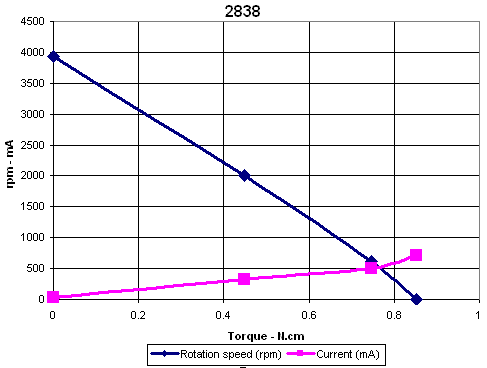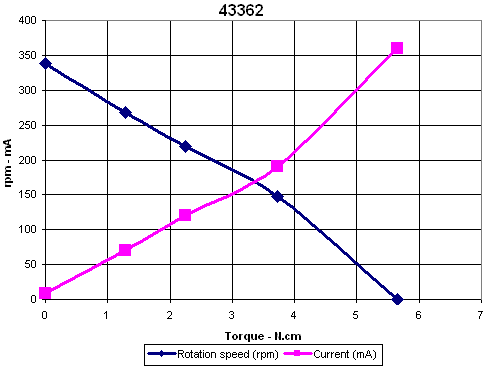Lego 9V Technic Motors compared characteristics

The roster
|
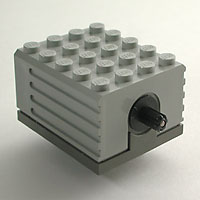
|
Electric Technic Motor 9V
Lugnet Partsref 2838c01, Peeron 2838c01, Lego 74569
The older 9V Technic motor (1990). Ungeared, it has a high rotation speed and low torque, so for most applications it requires an external gear reduction.
|
|
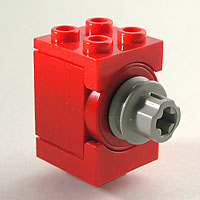
|
Electric Technic Micromotor
Lugnet Partsref 2986, Peeron 2986, Lego 70823
Appeared in 1993, this small, light weight motor turns slowly and offer low torque - but respectable torque for its size. Must be used with pulley and generally top and base.
|
|
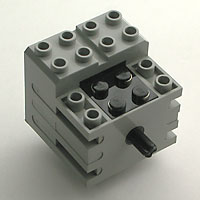
|
Electric Technic Mini-Motor 9v
Lugnet Partsref 71427c01, Peeron 71427c01, Lego 71427
Since 1997, this motor replaces 2838. Geared down and quite efficient, this is the motor of choice for most applications.
|
|
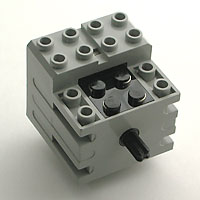
|
Electric Technic Mini-Motor 9v
Lego 43362
In 2002, Lego replaced 71427 motor with a new type, 43362. Externally almost identical, its internal structure is very different. Performances are almost as good, and its weight is much lower.
|
Weight
|

2838
|

2986
|

71427
|

43362
|
|
48g
|
10g
|
42g
|
28g
|
Supposed to be equivalent to 71427, 43362 motor is 30% lighter. This is generally an advantage, except when the motor is used as a counterweight, or to balance the structure, for example in COG-shifting walkers.
No-load characteristics
Test conditions: motor is powered by a variable, regulated power supply. An ammeter measures current flowing through the motor, a voltmeter monitors tension across. The rotation speed is measured by a RCX equipped with a light sensor, looking at an half-white/half black cylinder.
|
9 V supply
|

2838
|

2986
|

71427
|

43362
|
|
Rotation speed
(rotations per minute)
|
4100 rpm
|
35 rpm
|
360 rpm
|
340 rpm
|
|
No-load current
|
35 mA
|
6 mA
|
3.5 mA
|
9 mA
|
43362 has a higher no-load current than 71427, probably caused by higher internal friction.
As is usual for DC motors, rotation speed is proportionnal to voltage applied to them, this can be seen on graphs below. No-load current depends little on voltage.

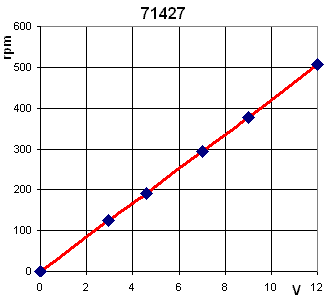
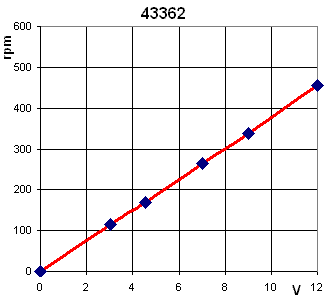
Stalled characteristics
Stalled current consumption is simply measured with motor axle shaft locked by hand. Stalled torque is established from the maximum weight that can be lifted by the machine described below. Note that stalled torque measure is VERY imprecise.
|
9 V supply
|

2838
|

2986
|

71427
|

43362
|
|
Stalled torque
|
0.85 N.cm
|
1.6 N.cm
|
6 N.cm
|
5.5 N.cm
|
|
Stalled current
|
700 mA
|
80 mA
|
360 mA
|
340 mA
|
Take care to avoid extended period stall condition, as power dissipated in motor case is quite high (6 Watts for 2838, 3 W for 71427) will cause a rapid temperature rise. Note that 43362 motor, equipped with a thermistor, should be protected against frying (not tested though !!!)
Loaded characteristics
Here is the setup used to measure motors under load. Electrical power is measured with voltmeter and ammeter. Mechanical power delivered by the motor is evaluated from the time used to lift the weight by some height (5 cylinder turns - the first two turns are not counted to eliminate initial acceleration). Torque applied is obtained from weight and cylinder radius.
Cylinder is directly placed on motor axle shaft, except for 2838 motor where a 1/5 gear reduction was used. Additionnal friction introduced may have somewhat impacted 2838 efficiency, but anyway this gearing is necessary for most applications. Torque displayed for this motor corrects gear reduction.

|

2838
|
Torque
|
Rotation
speed
|
Current
|
Mechanical
power
|
Electrical
power
|
Efficiency
|
|
6 V
|
0.45 N.cm
|
580 rpm
|
0.32 A
|
0.27 W
|
1.9 W
|
14 %
|
|
7 V
|
0.45 N.cm
|
1000 rpm
|
0.32 A
|
0.46 W
|
2.3 W
|
20 %
|
|
9 V
|
0.45 N.cm
|
2000 rpm
|
0.32 A
|
0.9 W
|
3 W
|
31 %
|
|
12 V
|
0.45 N.cm
|
3300 rpm
|
0.33 A
|
1.5 W
|
4 W
|
39 %
|
 我要赚赏金打赏帖
我要赚赏金打赏帖












